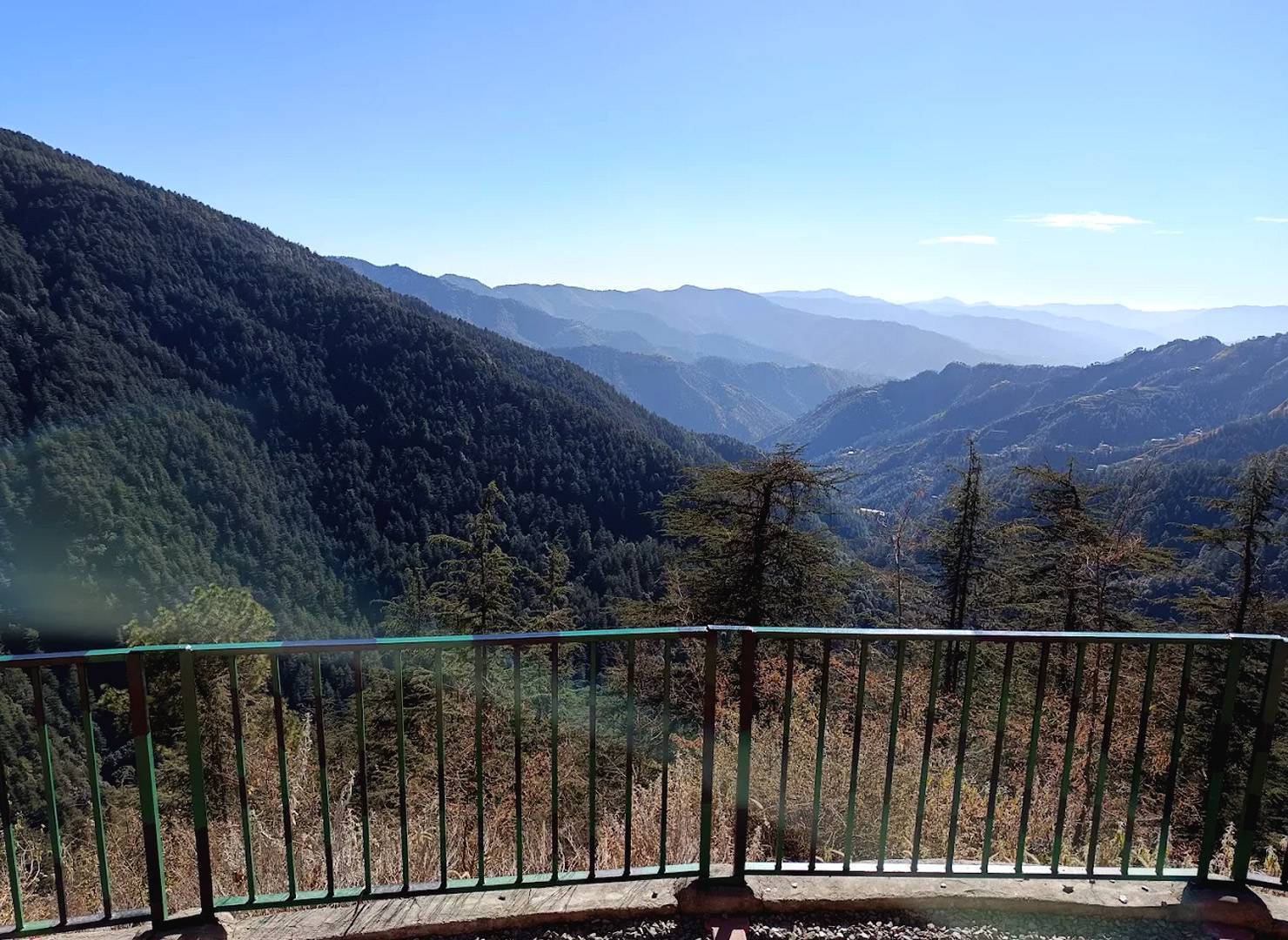The tranquil mountains in Himachal Pradesh, Shimla, offer more than stunning views of the mountains and colonial architecture. The picturesque hill station has a diverse culinary culture that reflects the warmhearted nature of its inhabitants and the abundance of its rugged terrain. Shimla's flavor is quite distinct from the sour, highly spiced cuisines of the Indian plains. It's a cuisine that is inspired by delicate flavors, natural ingredients, and traditional cooking methods that have been passed down through generations.
The food culture of Shimla is a tale of innovation and adaptation. In high altitudes, where winters can be harsh and the time for growth is limited and the inhabitants of Shimla have created food that not only feeds, but also has the power required to flourish in the harsh mountain climate. Shimla's food is renowned for the extensive scent and use of spices that are added to it, including cloves, cardamom and cinnamon, coriander, and a host of others. These warming spices aren't just flavor enhancers; they are essential ingredients that aid the body in adapting to the cold mountain climate.
Understanding the Unique Taste Profile of Shimla Cuisine
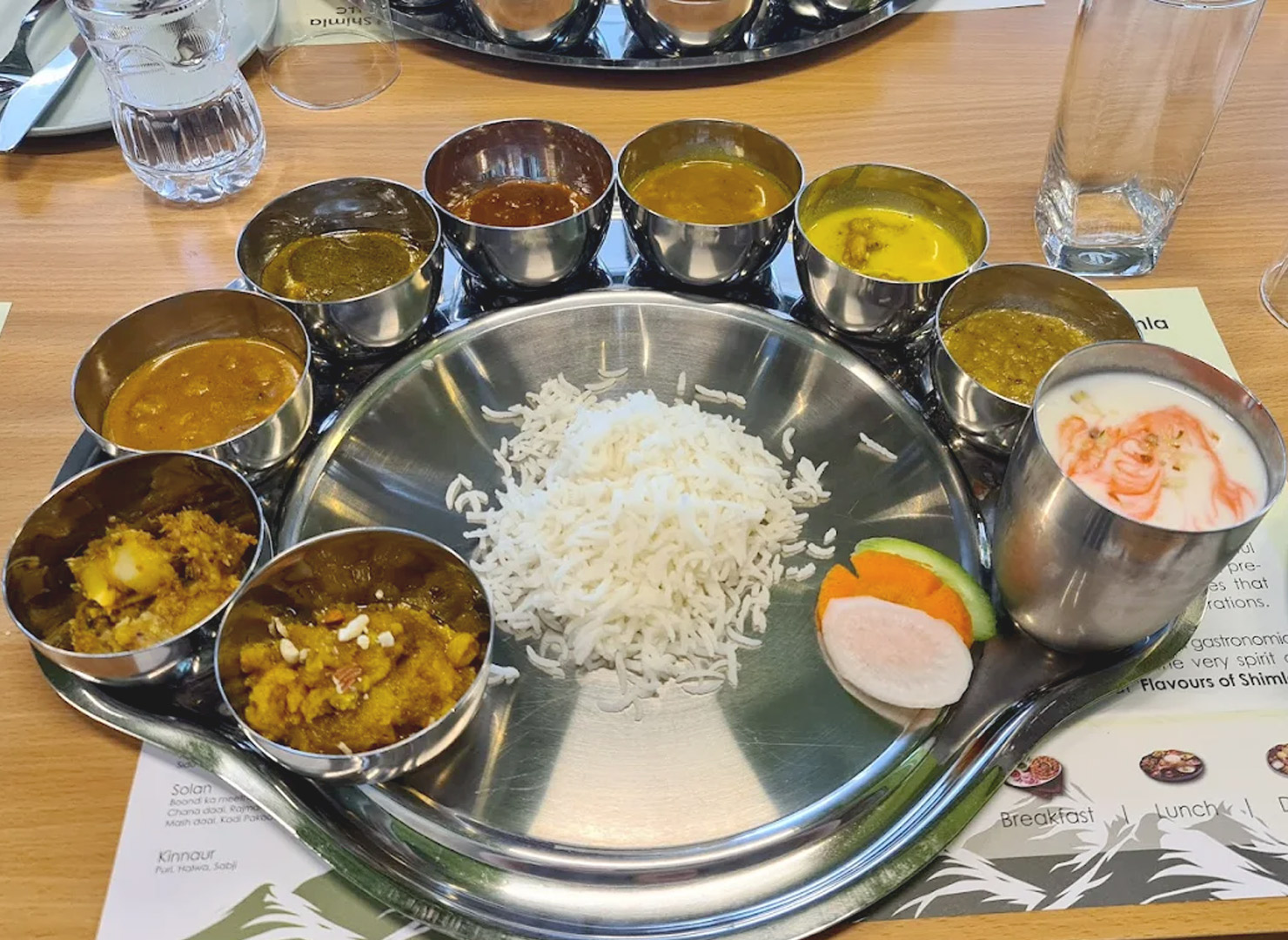
The flavor of Taste of Shimla food is distinguished by its subtlety and richness, rather than intense spice or overpowering heat. Contrary to the fiery curries from Rajasthan or the intricate spices of South India, Shimla's cuisine is focused on bringing out the flavor of ingredients by adding just enough spice to enhance rather than hide the natural flavors.
The most prominent flavors in Shimla food include:
Notes of Nutty and Earthy. Many dishes include ingredients like walnuts and sesame seeds, and poppy seeds that provide deep, nutty undertones, which complement the mountain setting. These ingredients are usually blended into pastes or cooked whole, to give richness and texture to dishes.
Warming Spice Blend The spice blend is a blend that emphasizes warmth over warmth. Cloves, cardamom, cinnamon, and bay leaves produce aroma-filled dishes that offer internal warmth, which is crucial for living at altitude. The majority of these spices are employed in small quantities so that each flavor can be distinct, rather than creating a sour mixture.
The tangy Yogurt Base: A lot of traditional recipes use yogurt as the base ingredient that gives a distinctive taste that is tangy and balances the sweetness of other ingredients. The tanginess is especially prominent in dishes such as Madra and other curry recipes.
Natural Sweetness: Food often includes natural sweeteners, such as honey and jaggery, which provide a subtle sweetness that complements the savory food items without overpowering them.
Smoky Tones: The traditional cooking techniques that use wood-fired cooking add distinct smoky flavors of many meals, and add layer of complexity to the overall flavor.
The Star Ingredients: Building Blocks of Shimla's Distinctive Taste
Primary Grains and Their Unique Characteristics
- Wheat Flour (Atta) A staple of Shimla food, the Local wheat comes with a distinctive taste of nutty taste due to the altitude-dependent growing conditions. It is used to create a variety of bread types, such as the well-known Siddu. The texture is a little more dense than plains wheat, and requires special kneading techniques and fermentation methods to create the perfect consistency.
- Barley (Jau) A tough crop that thrives in the mountain environment. Barley provides a distinct earthy taste along with a chewy and spongy feel to meals. It's typically ground into flour to make bread or used as a whole ingredient in stews and soups. The flavor is more robust than wheat and has a slight bitter undertone which is a great match with creamy, rich dishes.
- Rice: Although it isn't grown in abundance locally, rice is a staple food that can be that is sourced through trade. In Shimla food rice is prepared with fragrant spices and is sometimes coloring with turmeric to create delicious dishes that are the foundation of elaborate meals such as Dham.
- Buckwheat (Kuttu) A key ingredient during times of fasting Buckwheat is a unique flavor that's slightly bitter and nutty. It's usually ground into flour, and used to make pancakes and bread substitutes, offering distinct flavor that's healthy and filling.
Essential Legumes and Their Flavor Contributions
- Black Gram (Urad Dal): Perhaps the most vital legume used in Shimla cuisine Black Gram is the primary ingredient in Siddu filling. The most popular filling to make the Himachali siddu recipe is prepared using split black gram or urad Dal. The dal is then soaked for a long period of time and then ground into a fine paste along with aromatics and spices, and later cooked in an oven or steamer. Its silky texture and earthy, rich taste make it a great choice for curries and stuffings.
- Kidney Beans (Rajma), kidney beans that are grown at high altitude in this region are tasty and smooth. Their sweetness and natural ability to absorb flavors makes them ideal for slow-cooked dishes that are typical of mountain cuisine.
- Chickpeas (Chana) are used in the well-known Chana Madra, chickpeas provide protein as well as a mild nuanced flavor that works well in yogurt gravies. Chana Madra can be described as a rich yogurt-based curry that is made from chickpeas and spices that provide rich and creamy flavor.
- Horse Gram (Kulthi) A legume is rich in protein and has an earthy and slightly bitter taste and is admired by its warming properties. It's usually ground into flour, or cooked whole in stews with a hearty flavor that provides energy in the cold winter months.
Vegetables: The Seasonal Treasures
- Shimla Peppers (Capsicum) is the most well-known of the region's vegetable product, these big crisp peppers are mild, sweet flavor that is tempered by little spice. They are often filled with different fillings, or in stir-fries where their inherent sweetness is evident.
- Potatoes: The mountain-grown variety of potatoes has the texture of wax and a strong taste that's distinct from plain varieties. They're smaller, less delicious, and maintain their shape during cooking, making them the perfect choice for curries such as Aloo Palda.
- Wild Greens: The variety of wild plants that are harvested from the mountains provides distinctive flavors to the dishes. This includes nettle (kandali) that has a slight bitter taste like spinach, but with more intensity, as well as a variety of ferns that impart woody, earthy flavors.
- Turnips and Radishes Root vegetables that are able to withstand frigid temperatures, they provide a sharp, spicy flavor to meals and are usually preserved with pickles during the winter months.
Dairy Products: The Creamy Foundation
- Mountains Milk: the milk of cows that graze on the mountain grasses and plants is rich and creamy texture and a slightly sweet taste which is distinct from dairy products sold in the commercial market. This is a characteristic that affects the dairy products produced of it.
- Yogurt (Dahi) The fresh yogurt that is made of mountain milk has a sweet mildly sour flavor that serves as the base of various curries. Its consistency is generally more thick than commercial yogurt and provides an incredibly creamy texture to food.
- Ghee (Clarified Butter) Locally produced ghee has a golden hue and the nutty scent that is due to the high quality of the milk as well as traditional cooking methods. The flavor of the product is much more sophisticated than commercial ghee with herbal undertones derived from the natural diet of cows.
- Fresh cheese (Paneer) Mountain-grown paneer has a more firm texture and a more distinct flavor as compared to store-bought versions, usually tasting tangy due the traditional method of making it.
Signature Dishes: Exploring Shimla's Iconic Tastes
Siddu: The Crown Jewel of Shimla Cuisine
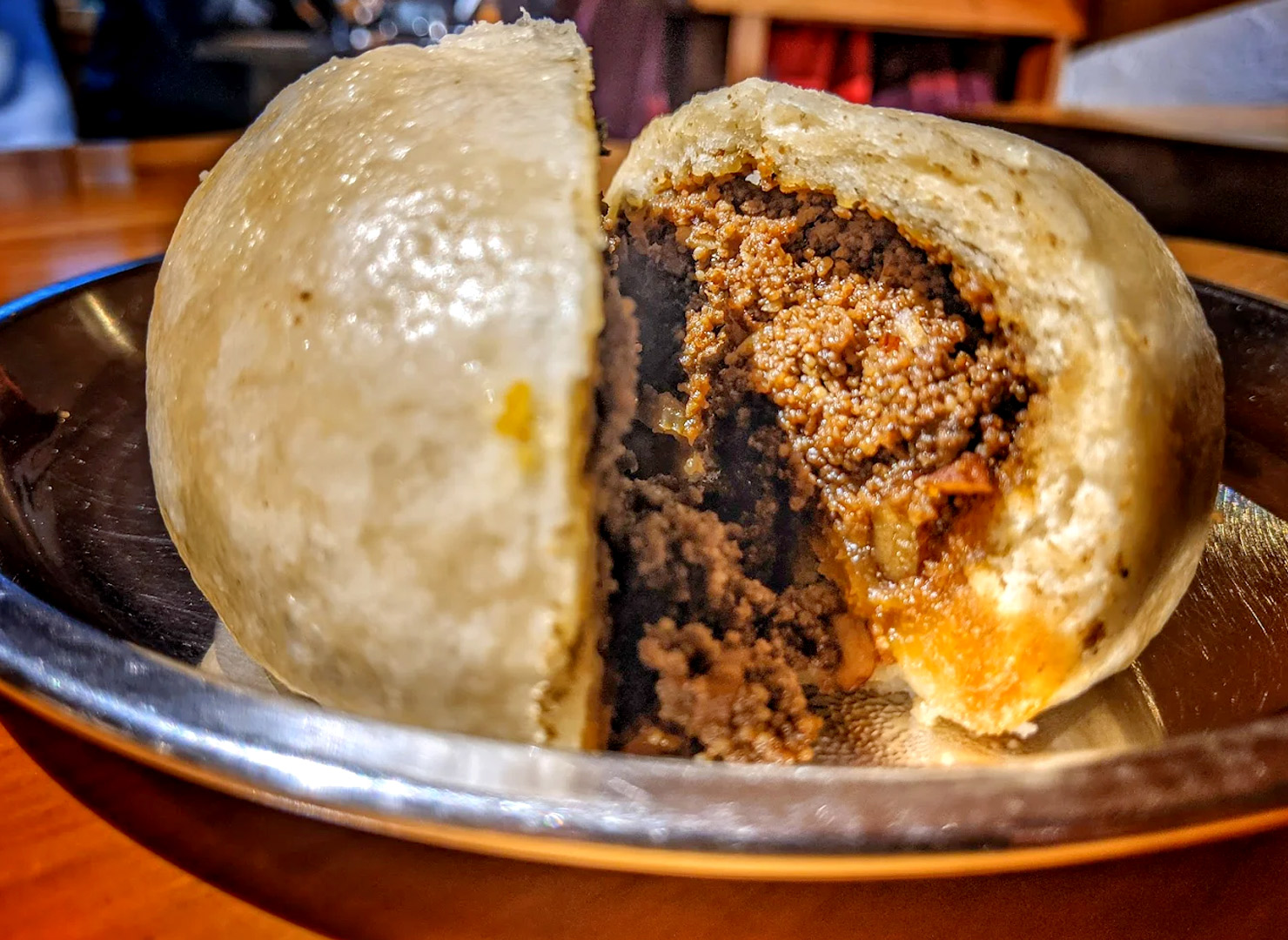
Shimla is renowned for its cuisines such as Chha Gosht, Madra, and Sidu, which are a reflection of the culinary traditions that are rich in Himachal Pradesh. It is typically filled with different fillings like walnuts, green peas, pudina and herbs. It is usually served with condiments like clarified butter (desi Ghee) or lentil soup as well as green chutney.
Siddu symbolizes the essence of Shimla's philosophy on food - simple ingredients that are transformed into something amazing through perseverance and ability. Siddu is a "Himachali dish" is one of the most popular dishes of Himachal, particularly found in Mandi, Kullu, Manali, Rohru and Shimla. It's just a kind of bread made of wheat flour. To make siddu, all you need to prepare a mixture of yeast and wheat. After you have kneaded the wheat with yeast, allow the dough to rise minimum for four to five hours or until it has risen well.Always remember that siddu can't be made in just a few just a few minutes. It takes a few hours since siddu is yeast-based.
Siddu's Taste: An initial bite of Siddu is a light and slightly sour outer layer of the wheat dough that is fermented. It is then accompanied by an incredibly rich and nutty filling, which typically blends ground black gram along with fragrant spices. Its contrast with the light bread and the intensely flavorful filling makes for a harmonious balance. If served with ghee the sweetness increases, while the mint chutney is a great accompaniment. Refreshing, refreshing contrast.
Main Ingredients and Their Roles:
- Wheat Flour: Offers the fundamental structure and mild, nutty flavor.
- Yeast: Gives you the distinctive slightly sour, fermented flavor.
- Black Gram (Urad Dal): is the main filling ingredient that provides protein and earthiness.
- Walnuts: Give the flavor a distinctive mountain taste
- Cumin and Coriander: Give warming spice notes, but not the overwhelming heat
- Fresh Herbs: Coriander or mint leaves are a great source of brightness and freshness.
Chha Gosht: The Aromatic Meat Delicacy
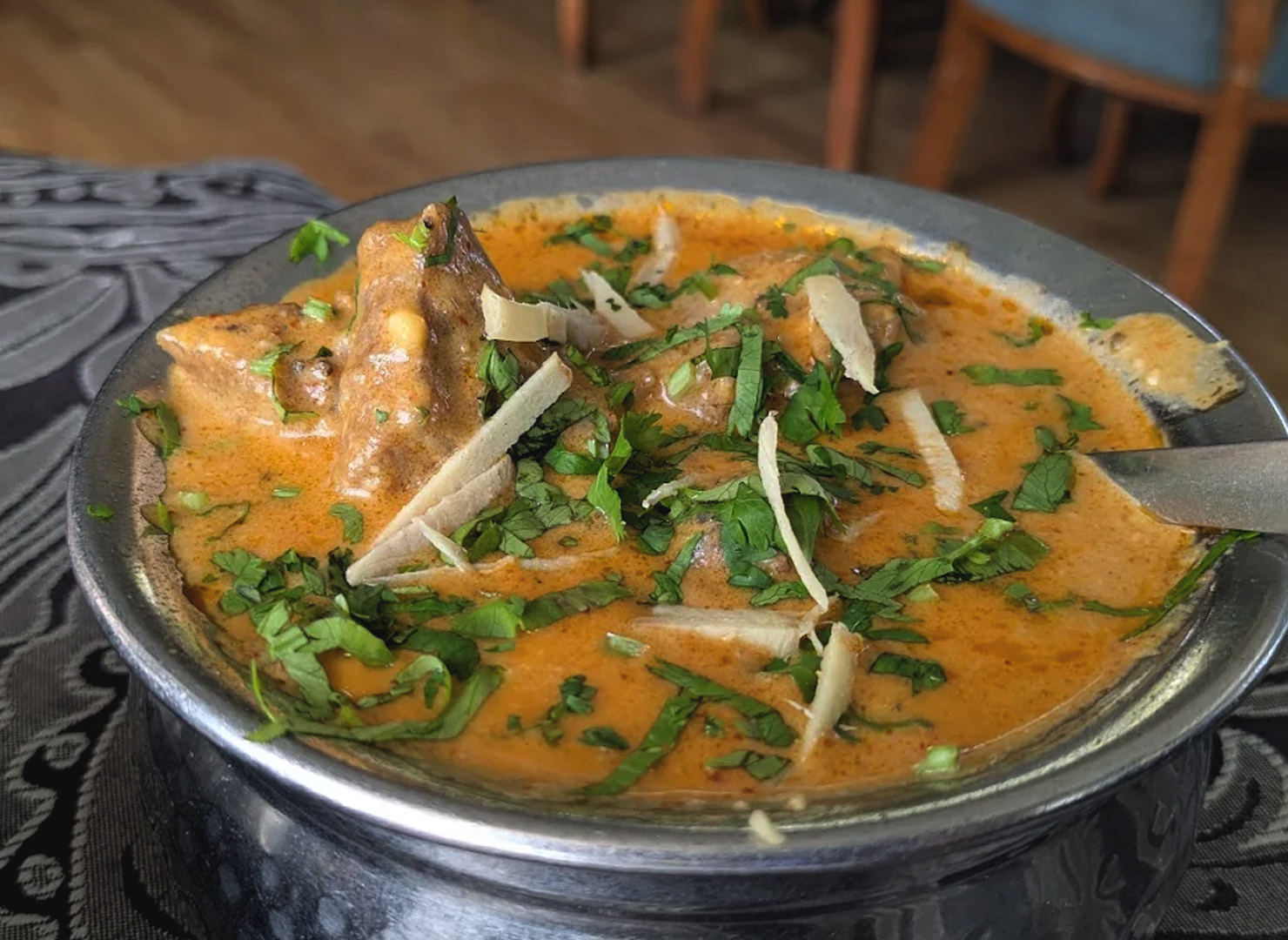
This classic lamb curry showcases the intricate spice use in the mountain food. The name comes because of its yogurt (chha) which forms the base of the dish, providing the perfect creamy, tangy basis that enhances the flavor of the lamb raised in mountain regions.
It's a Taste Experience Chha Gosht is a delicious blend of flavors that develops slowly. The first flavor is slightly tangy from the yogurt. It is followed by an intense, thrilling taste from the meat. Cardamom cloves and cinnamon offer warmth and aroma, without generating warmth and allowing the meat's original flavor to let its natural flavor shine through.
Main Ingredients and Their Contributions:
Mountain Lamb It has a distinctive flavor that is less gamey than plains meat because of the animal's diet
- Yogurt: Gives tang and helps to tenderize the meat.
- Cardamom adds notes of floral sweetness, which complement the meat
- Cinnamon contributes warmth and a subtle sweetness
- Bay Leaves: Add an aromatic aroma and a subtle bitterness to balance the sweetness
Madra: The Festive Legume Curry
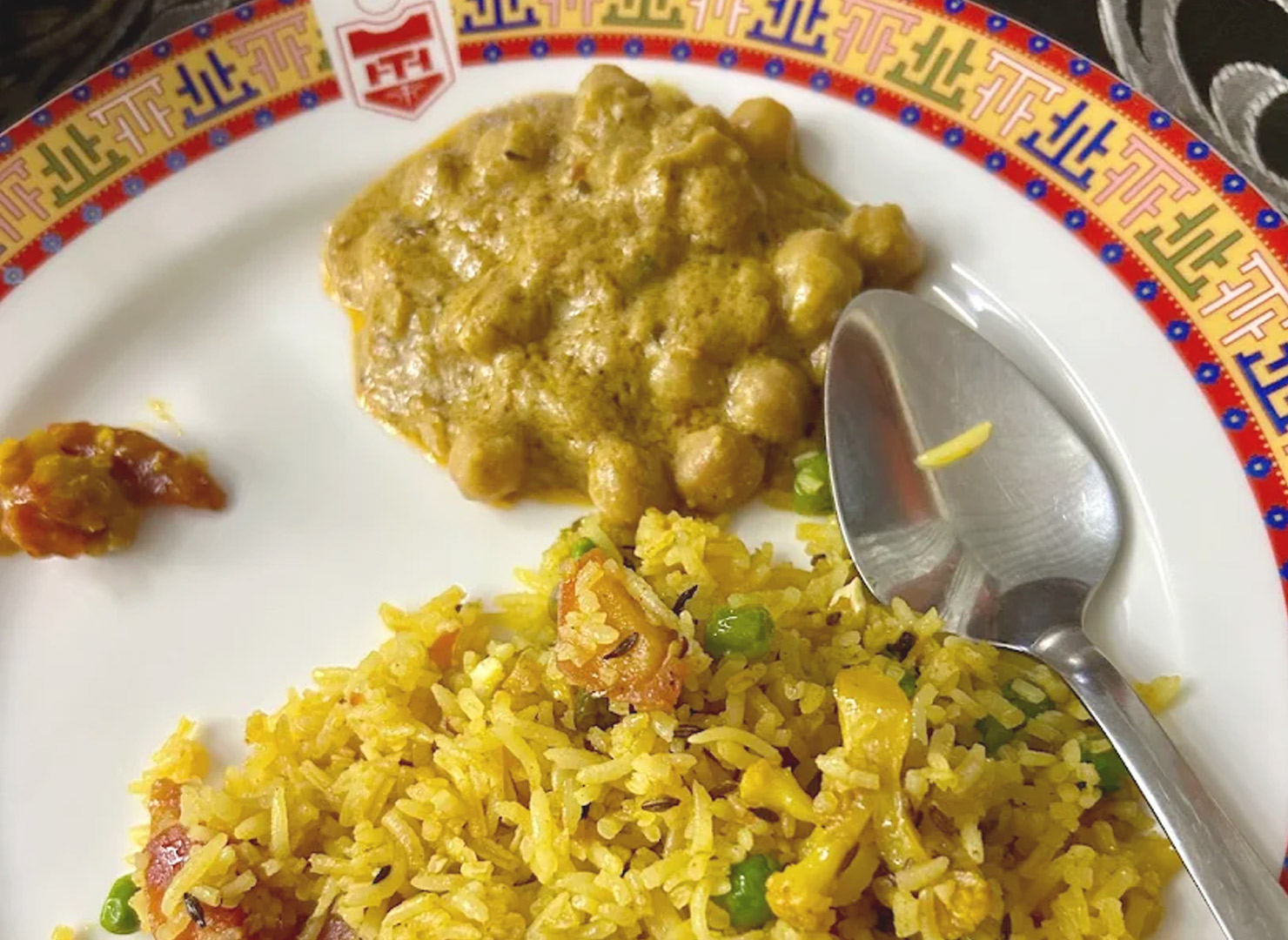
Well-cooked in oil, and various spices such as cloves, cardamoms, cinnamon, cumin, turmeric and coriander powder improve the flavor of the dish. Madra is among the most popular dishes that reflects the culinary culture that is the culture of Himachal Pradesh.
Madra is traditionally prepared with kidney beans or chickpeas and is the main vegetarian dish of Shimla food. It is usually served during special events, which makes it a essential to the region's traditional culinary traditions.
It's a Taste Experience Madra has a unique taste profile, where its natural sweetness from legumes is accentuated by the aroma of spices. The yogurt base imparts an acidity that is able to cut through the richness and it's slow-cooked process permits the flavors to blend together to form a harmonious whole.
Main Ingredients and Their Flavor Impact:
- Chickpeas and Kidney Beans provide the protein base and light, nutty flavor.
- Yogurt is the source of the distinctive flavor and texture of yogurt.
- Turmeric: It imparts earthiness as well as the distinctive golden hue
- Garam Masala Blend Offers rich warmth, without being overly hot.
- Ginger and Garlic Incorporate pungency, depth
Dham: The Complete Festive Experience

There are many dishes to choose from like dal as well as curd, rice, rajma boor ki Kadi as well as a dash of jaggery. Dham is a meal that is festive that is served at special occasions. It is made up of rice and dal, curd, rajma ...
Dham is more than only a meal, but it is a full-bodied experience that is the epitome of Himachali food. This lavish feast combines several dishes, each with their own flavor, to make a satisfying and balanced dinner.
An Experience of Taste Experience: Dham offers a trip through a variety of flavors in a single meal. Sweet rice is an aromatic, mild base, while the dal provides warm, earthy comfort, and the rajma adds smoothness and richness, while the yogurt-based dishes provide tangy zing. Jaggery is a natural sweetness that balances diverse savory ingredients.
Aktori: The Unique Potato Pancake
Aktori is a famous dish that hails from Shimla and is a distinctive Himachali dish that can delight your palate with its distinct flavor. The potatoes are grated and mixed with wheat flour, ghee and spices to create an adios recipe. It is baked until crispy, making it spread out on an oven-ready grill.
This recipe shows how the simplest ingredients can transform into something extraordinary by using traditional methods.
"The Taste Experience": Aktori delivers an ideal balance of textures Crispy edges, an incredibly soft and flavorful inside. The potatoes add the earthiness and sweetness that is natural while the spices add warmth and depth.
Main Ingredients and Their Roles:
- Grated potatoes: Provide the texture of the potato base and a subtle, earthy flavor
- Wheat Flour helps to bind the mixture and provides substance
- Ghee: Adds to the richness of the food and contributes to the crisp texture
- Cumin and Coriander to add flavor and warmth
The Spice Philosophy: Understanding Shimla's Seasoning Approach
The way to spice up Shimla food is distinct from the other Indian regional dishes. Instead of creating fire or overpowering the palate, the spices used are used in Shimla foods are used to:
- Give Warmth: In the colder climate, spices like cardamom, cinnamon and cloves are utilised to provide warmth and not just to enhance taste.
- Enhance natural flavors: Spices can be utilized in moderate amounts to enhance the natural flavor of ingredients instead of covering them up.
- Aid in Digestion: At higher altitudes, digestion can become difficult, which is why spices such as coriander, cumin, and Hing (asafoetida) are utilized for their properties to aid digestion.
- Keep Foods Safe: A lot of spices possess naturally occurring preservative qualities. This is essential in areas where fresh ingredients may not be readily accessible.
Key Spice Combinations and Their Taste Profiles
A Warming Blend Cardamom as well as cinnamon along with cloves produce an aroma of sweet and aromatic warmth that is the hallmark of numerous Shimla dishes. This combination gives the comfort and energy required to live in the mountains.
the Digestive Mix Cumin the form of coriander and fennel seeds are typically dried-roasted and then ground to make a mix which aids digestion, while also adding some earthy, slightly bitter tastes.
The preservation Blend: Turmeric, fenugreek as well as mustard seeds, are utilized not only for flavor, but also because of their natural preservation properties that are essential to store food in the mountains.
Seasonal Variations in Taste and Ingredients
The flavor of Shimla food changes drastically according to the season, indicating how readily available ingredients as well as the body's needs changing throughout the year.
Spring Flavors (March-May)
Spring is a time for tender, fresh flavor as new vegetables start to show up. Foods that are prepared during this season include:
- Fresh green vegetables that require minimal preparation to maintain their delicious flavor
- Young leaves and shoots that impart bitter, cleansing flavors after a winter's heavy diet
- Lighter meals that help the body recover from winter's heavy meals
Summer Abundance (June-August)
The short but intense growing season produces an explosion of flavors:
- Fresh, crisp vegetables are utilized in easy recipes that emphasize their flavor and natural appeal.
- The preservation process begins with food items being dried, picked and then made into a ferment.
- The coolest foods, like yogurt-based dishes get more popular
Autumn Harvest (September-November)
This is the season for preservation and preparation:
- The rich, intense flavors of the dried and preserved vegetables
- Fruit flavors are prominent when the mountain fruits like apples get ripe
- More intense preparations start as the body prepares for winter.
Winter Comfort (December-February)
Winter food is a focus on energy-dense, warming foods:
- The dried and preserved ingredients make richer, more concentrated flavors
- The utilization of spices that are warming as well as the richness of ingredients like ghee or nuts
- Comfort foods that offer long-lasting energy in the face of frigid winter
Traditional Beverages: Complementing the Food Experience
- Shimla's drinks complement food perfectly offering both flavor and practical advantages.
- Butter Tea (Po Cha) The drink that is influenced by Tibet blends tea along with salt and butter to create warm, rich beverage that gives you energy quickly and warmth.
- Herbal Mountain Teas Created using local herbs, such as the rhododendron flower The teas are unique in their floral aromas and therapeutic benefits.
- Lassi and Chaas Drinks made from yogurt that help digestion and provide cooling relief during the warmer months.
- Traditional fermented drinks: Similar to Chang (barley-based moderately alcoholic drink) These drinks are probiotic-rich and were historically important in terms of nutrition and social bonding.
Cooking Techniques That Shape the Taste
The cooking techniques used in Shimla food have a significant impact on the final flavor of dishes:
Slow Cooking
The majority of traditional meals are cooked slowly on low heat, which allows flavors to develop slowly and the ingredients to completely soften. This is especially important when cooking meat and legume-based preparations.
Steaming
For dishes such as Siddu Steaming helps preserve the delicate flavors of the ingredients, while also creating distinctive textures. The gentle heat will ensure that delicate flavors don't go away.
Dry Roasting
The spices are usually dry-roasted prior to usage, which increases their flavor and gives them the characteristic aromatic, nutty flavor that is typical of mountain-based cuisine.
Fermentation
A lot of dishes require some form of fermentation, regardless of whether it's the bread dough that is used to make Siddu or the subtle fermentation of legume-based dishes. This increases complexity and improves digestion.
Wood Fire Cooking
Traditional cooking on wood-fires creates a mild smokey flavor that is typical of the authentic Shimla food.
The Cultural Context of Taste
To understand the food of Shimla, you must appreciate the cultural context. Food in Shimla isn't just about nutrition, but also about:
Community Bonding Foods are typically made in groups family members and friends getting together to cook elaborate dishes such as Dham.
Seasonal Celebration: Every season is marked by its own rituals for food including spring cleaning food to winter comfort foods.
Hospitality: The flavor of the food in Shimla comes from the warm mountain hospitality in which sharing food is considered a sacred obligation.
The preservation of traditions: A variety of culinary techniques and flavors remain unchanged over time and have preserved not only flavor but also the culture.
Modern Adaptations While Preserving Authentic Taste
As Shimla has transformed to become a tourism destination, its food has changed, but it is still trying to keep its traditional flavor:
Restaurant adaptations: Traditional dishes are now served in more modern ways and are attempting to keep their original flavors.
Health Consciousness: Older ingredients such as millet and buckwheat are being brought back to life to benefit health and are bringing old tastes to new people.
Fusion Experiments: A few chefs are trying to combine traditional Shimla tastes with contemporary cooking techniques, resulting in exciting experience in the kitchen.
Food availability: Modern transport has allowed ingredients to be available all year long, although some traditionalists prefer to adhere to traditional seasonal eating patterns.
Tips for Experiencing Authentic Shimla Flavors
If you're looking to taste the authentic flavor of Shimla dishes:
Find Local Businesses: Search for family-run, small eateries instead of big restaurants which cater primarily to tourists.
Take a look at seasonal dishes: ask what's on the menu and look for dishes made with local products that are in season.
Don't expect high heat: Shimla food is about subtle flavorful, complex flavors instead of spice.
Be awed by the process: Many dishes take time and patience to cook. This slow process is crucial to creating the authentic flavor.
Enjoy traditional combinations: Try traditional dishes served along with breads, chutneys and drinks.
For more about Shimla -
Shimla isn't just about its diverse and rich food culture, but also its diverse traditions, agriculture, and rural living. If you'd like to know more about the local villages, District, and regional charm of Shimla, go through this comprehensive guide to villages in India, Shimla

